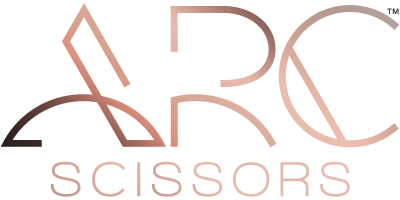Long Layers: Control, Movement & Precision for Every Hair Type

Photo Credit: Instagram via @xo.farhana.balayage
Long layers are one of the most requested cuts, and one of the easiest to get wrong. This cut demands total control—enough internal release to create movement but not so much that the silhouette collapses. The foundation starts with the ARC™ PHANTOM II, a lightweight, perfectly balanced scissor designed for stylists who shift seamlessly between wet and dry cutting. Its fine-tuned tension system allows an effortless glide through every texture, giving clean control through dense or delicate sections without drag or push.
Below, ARC™ Ambassadors Farhana Premji (@xo.farhana.balayage), Liz Haven (@lizhaven), and Matt Swinney (@matt.swinney) share their key techniques, tips and common mistakes to avoid when cutting long layers that grow out beautifully and enhance every hair type.
1. Map The Cut Through Consultation
Before sectioning, build a clear design map with your client. Their lifestyle, density and texture determine the haircut’s elevation, weight distribution, and movement.
Ask:
-
Do you want pieces to fall forward when you tie your hair back?
-
What features do you want to highlight—cheekbones, jawline, collarbones?
-
Do you prefer your layers to start above or below the collarbone?
Establishing these answers upfront prevents mid-cut adjustments and keeps section angles consistent from crown to perimeter.
Photo Credit: Instagram via @lizhaven
2. Mistakes That Can Ruin Long Layers
For long layers that move naturally, focus on maintaining perimeter strength while controlling interior weight.
-
Insurance section: Leave ½-inch of the perimeter out when layering to prevent holes or gaps, says Liz Haven.
-
Avoid choppy lines: Matt Swinney softens layers by twisting the hair and using a light open-and-close motion with the PHANTOM II, never fully closing the blades.
-
Keep it clean: The scissor’s fine, balanced glide allows smooth, controlled slide cutting—perfect for diffusing weight without over-removal or visible lines.
The PHANTOM II’s even tension and smooth motion help prevent overcutting in dense areas, giving stylists more precision when diffusing weight internally.
Get the scissor Matt Swinney trusts for perfect long layers—the ARC™ PHANTOM II.
3. Refine the Face Frame With Precision
The face frame is the focal point of long layers, and balance determines how the entire shape reads. These ARC™ Ambassadors agree on a few key fundamentals:
- Cut dry: Work on dry hair to assess natural fall and weight distribution.
- Avoid holes: Create a guide and blend into length for consistency.
- Adjust elevation: Keep finer hair lower (0 to 45 degrees) for fullness; elevate denser textures higher for softness.
-
Body position: Always face the client to ensure visual balance and symmetry.
Matt prefers his ARC™ PHANTOM II for this section: “It transitions beautifully from wet to dry cutting, giving total control around the face.”
The PHANTOM II’s balanced tension and smooth motion help stylists maintain precision through contour areas—preventing uneven weight or over-removal as they move from structured to visual cutting.
4. Connect the Fringe Seamlessly
When blending curtain bangs into long layers, precision and control matter. Using the PHANTOM II for controlled point cutting, Liz seamlessly connects the fringe with the face-framing layers.
“Sometimes I leave the frame and curtain disconnected,” says Liz. “If I decide to connect the two, I like to comb the hair (dry) into natural fall and connect A to B using shallow and deep point-cutting methods.”
The PHANTOM II’s narrow tip makes it ideal for reaching tight sections and refining edges without disturbing balance. Its steady glide gives stylists control through smaller zones where over-removal can throw off proportion.
Photo Credit: Instagram via @lizhaven
5. Customize for Texture
For curly or wavy clients, dry cutting ensures accuracy and maintains pattern integrity. “I may even fluff or brush it a bit to really expand the natural curl pattern,” says Liz.
The PHANTOM II’s precision edge glides cleanly through curls without frizzing or stretching, allowing stylists to refine the silhouette without breaking pattern definition. For tighter coils, work with smaller sections and moderate tension to avoid uneven shrinkage.
6. Keep Density Where It Matters
“Long hair grows out best when it trails off and you keep a little more density in the back,” says Matt.
Maintain fullness by adjusting your cutting angle:
-
Diagonal = stronger texture
-
Parallel = softer texture
Use the PHANTOM II for refinement—its even weight and controlled motion make it easier to maintain body and balance through the back.

Photo Credit: Instagram via @matt.swinney
7. Blend With Purpose
Blending layers isn’t about adding more—it’s about connecting what’s already there.
Farhana Premji advises holding each section at varying elevations to identify corners or bulky transitions. Refine using the PHANTOM II for even tension and soft motion, connecting layers seamlessly.

8. Finish on Dry Hair
Always finish on dry hair to check texture, balance and flow. The PHANTOM II transitions easily from wet and dry cutting, letting stylists refine the perimeter, add softness to the ends and ensure the cut moves naturally when styled.
Use visual balance checks—watch how light moves through the ends. Even transparency indicates clean, balanced density throughout the shape.
The Long-Layer Essential
Build softness, maintain structure and control movement with the ARC™ PHANTOM II—the scissor trusted by educators who cut across every texture and technique. Lightweight, razor-sharp and crafted in Japan from premium ATS314 steel—it’s the scissor designed for total control and effortless glide on every hair type.



 ARC™ PHANTOM II
ARC™ PHANTOM II


Comments on this post (0)